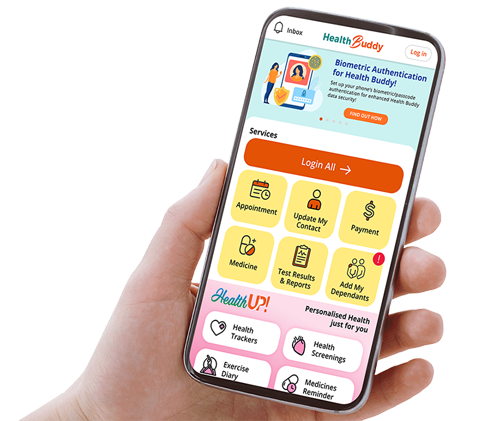National Cancer Centre Singapore will NEVER ask you to transfer money over a call. If in doubt, call the 24/7 ScamShield helpline at 1799, or visit the ScamShield website at www.scamshield.gov.sg.
Research Themes
Theme 1: The Virus
Over 60% of the world’s VDCs occur in Asia, and Asians appear to be uniquely susceptible to three significant infection-related cancers: Hepatitis B-related Hepatocellular Carcinoma; Helicobacter Pylori (HP)-related gastric cancer, and Epstein-Barr virus (EBV)-related Nasopharyngeal Carcinoma (NPC).
The major aims of this theme are to:
- Investigate the impact of virus-host interactions during tumour progression, with an emphasis on the key MHC class I pathway-CD8 Cytotoxic T cell nexus – this will include an analysis of new immune determinants (epitopes) displayed on the infected cells surface,
- Develop reagents such as T-cell receptor-like antibodies that facilitate the analysis of virus-infected tumours and their immune correlates during the early stages of malignant transformation,
- Identify the virus-induced mechanisms of tumorigenesis and immune evasion,
- Establish the first national biobank for VDCs with connectivity to international biobanks, and
- Study the susceptibility of EBV infection in early infancy/childhood with the concurrent screening of HLA haplotypes and TLR8 polymorphisms.
Theme 2: The Tumour
The tumour microenvironment in different VDCs, including the stroma containing cancer-associated fibroblasts (CAFs) and endothelial cells, is hypothesised to play a critical role in generating heterogeneity in response to immune checkpoint inhibitors, likely by influencing gene expression in tumour cells and the associated immune milieu.
Specific aims are to:
- Comprehensively characterise the CD45 negative tumour cells and the non-immune components of the cancer-associated stroma (such as cancer-associated fibroblasts, or CAFs) of VDCs versus non-VDCs,
- Determine functional differences in the immunosuppressive properties of the tumours/stroma in immunotherapy responsive (Hodgkin's disease) versus non-responsive cancers (NPC, OSCC),
- Interrogate the temporal alterations in the genome/transcriptome pre- and post-immunotherapy treatment to study how tumour cells and their associated stroma adapt to modulate their local immune microenvironment in response to treatment with checkpoint inhibitors.
Theme 3: Immune Microenvironment
It is hypothesised that VDCs manipulate their immune microenvironment to induce immunosuppression that prevents effective anti-cancer immunity and curtails responses to immunotherapy.
In this theme, the specific aims are to:
- Investigate the dynamic interface between systemic immunity and the immune microenvironment of VDCs, focusing on the immunophenotypic, molecular, and functional characterisation of tumour-infiltrating immune cells and their circulating counterparts,
- Study the underlying conditions and cell types responsible for this immunosuppression (and curtailed responses to immunotherapy),
- Propose and test novel combinatorial immunotherapeutics to improve the efficacy of immunotherapy in VDCs, based on discoveries made in Aims 1 and 2.
Theme 4: Metabolism
We hypothesise that VDCs display distinct changes in metabolism that generate unique metabolic microenvironments. Such changes influence and shape the phenotype of TILs to promote immunosuppression, tumour progression and/or resistance to immunotherapy.
Therefore, we aim to:
- Characterise the metabolic footprint of the tumour microenvironment in VDCs through untargeted and targeted metabolomics and MADLI/DESI mass spectrometry imaging,
- Investigate the tumour-associated metabolic changes that regulate immunosuppression in VDCs,
- Interrogate the potential use of metabolic biomarkers for assessing immunotherapy response in preclinical models through in vivo metabolic imaging,
- Identify novel metabolic targets for designing improved combination immunotherapies.
Theme 5: Therapeutic Intervention
Theme 5 will focus on building the next generation of cutting edge antibody and cell-based immunotherapies that will leverage on the target discoveries of Themes 1-4, and rationally designing single and combination studies informed by this new knowledge, including a holistic integrated cancer immunogram for VDCs incorporating collective information from the characterisation of the VDC tumour microenvironment in Themes 1-4. A key consideration is to build therapeutic platforms and strategies that we can realistically compete in globally.
Specific aims are to:
- Develop novel human therapeutic antibodies and versatile cellular therapy platforms with the use of gdT and antigen-specific αβ T cells,
- Develop new adjuvant and therapeutic vaccines using neoantigen discovery and vaccine generation platforms,
- Permeate and reduce immunosuppression in the solid tumour by the rational combination of anti-angiogenic, lymphangiogenic therapies, or vessel normalization agents with immunotherapy,
- Discover the therapeutic and treatment biomarkers in immunotherapy clinical trial studies and preclinical models, as well as validate the efficacy through consolidating the cancer transcriptome/immunome/metabolome.
Keep Healthy With
© 2025 SingHealth Group. All Rights Reserved.
















